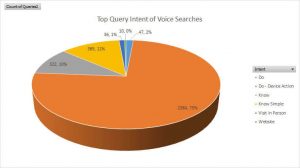Cloud-based technologies are transforming many areas of the enterprise, from sales management to data storage. The supply chain is one area where cloud-based data is able to streamline processes and lower costs. Both of these efforts can be accomplished without a detrimental effect on the customer’s satisfaction, in fact they often result in faster fulfillment times and fewer inventory problems. The ROI of supply chain analytics is compelling, with a Gartner survey of supply chain strategists finding 29 percent of organizations said they have achieved high levels of ROI by using analytics.
Here are seven benefits of using supply chain data that can promote new efficiencies and uncover hidden cost savings:
- Manage pricing. Firms are utilizing big data from consumers to set pricing that seeks to get the most profit margins out of every product. They can also use data to correlate different kinds of products that can be sold/packaged together and then adjust their strategy to drive more sales.
- Leverage visibility. Big data is fundamentally about having visibility. Within the supply chain, companies can identify cost factors more easily when suppliers, product carriers, and end customer actions are all interconnected. Being able to spot trends and problems early in the supply chain allows companies to fix problems sooner and make adjustments on the fly.
- Reduce wasted actions. Supply chain data can uncover inefficiencies in how inventory is moved from place to place, or in regards to how many entities need to touch an order before delivery is complete. Perhaps inventory can be more intelligently broken up and shipped to regional centers, or entire processing steps can be eliminated. Data that follows the entire chain of events helps to uncover these problems.
- Enable consumer customizations. Product data within the supply chain can be used to create new products or alter products to fit consumer demand. If a product is produced at scale, the costs of introducing a new version are often very low. A company might see data about the swelling orders for a certain t-shirt design, and then offer to produce new patterns or colors based on customer requests.
- Work with a qualified partner. An integrated and data-driven supply chain makes it simple to move some tasks to a trusted partner. The review of data might show that outsourcing transportation planning or logistics to a third-party firm will result in more focus on revenue-generation, and an overall positive ROI.
- Performance matters. The performance of an operation cannot be measured if there is no data. Reviewing performance metrics regarding inventory levels, on-time delivery percentage, and customer satisfaction helps companies to spot trends and adjust. Perhaps a certain product line is selling well but has a consistently late supplier or is a frequent return. Supply chain data can help management decide if the product line should be eliminated or if processes can be changed.
- Consolidation is key. Lowering logistical costs can be realized through analysis of shipping data and spotting areas where loads can be consolidated. Companies are using data to explore various methods, including shipping only on certain days or using truckloads that perform multiple drops for maximum efficiency.
As data impacts all areas of business, its use in supply chain optimization will only accelerate. Future trends such as the Internet of Things will further involve the use of data, creating an environment where smart devices recognize parts failures and order replacements online without any human interaction. Predictive analytics will also be a major force, as companies use data to predict demand and trends in advance, helping them to better prepare for product ordering, shipping, and distribution.
Business & Finance Articles on Business 2 Community
(85)






